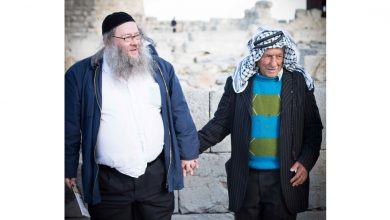Unpacking Conflict
What are the different stages that a conflict goes through? How does this look like in real life? What happens to us when we are in the middle of a conflict, and why do we sometimes start to behave seemingly irrationally? Can a third party help to resolve the conflict, and if so how? Are the reasons for the conflict the ones that are being said out loud, or do we need to look deeper? This article aims to answer these questions and more, and to provide the chance to combine a theory about conflict with an example of a real conflict.

Why did I choose this tool? I have noticed that a lot of material about conflicts is more theoretical than practical, so I took upon myself the challenge of connecting the theory about “stages of conflict” to an example that actually happened, to analyze a real conflict. and learn about its stages and consequently how it could be avoided/resolved.
How does this apply to being a trainer? There may be times when a trainer needs to do a session on conflict management, where it will be useful to have an in-depth understanding of the matter. On the other hand, understanding conflicts and the impact they can have on people and societies is an important aspect of the intercultural competence. Having a theoretical understanding of conflict combined with practical and actionable knowledge will help us whether we are doing sessions about conflict, find ourselves in a conflict or see a conflict and want to play a part in helping to resolve it with minimal damage to both sides.
Main content:
To understand conflict on a large scale, what causes it and how to resolve it, it’s useful to understand “normal” everyday conflicts that anyone can experience. Even though having a conflict can be scary and stressful, it doesn’t necessarily have to be negative in the long term.
How the conflict is handled, and how it is resolved (or not resolved) is what makes all the difference. And the strategies that most people use to handle the conflict are not actually the ones that will lead to good results on the long term, like conceding to everything and apologizing for everything for the sake of peace, or not conceding to anything or apologizing just because you have more power in the situation and therefore can afford to do that.
Here are the different stages of a conflict, using a real example of a landlady who lives in the house with a tenant.
FIVE STAGES OF CONFLICT:
- Latent Stage: Participants not yet aware of the conflict
It may be incorrect to say that at this stage participants are completely unaware of conflict, but rather that they are not aware of it in its entirety and most likely are not aware of the “other side” of the conflict. There may be the sense that something is wrong, and one or both of the “participants” in the conflict may be going over in their heads what they should/want to say to the other one. This process may be a controlled and logical one, or they may be building up the matter in their heads to be bigger than it actually is and possibly coming up with all kinds of other unrelated reasons supporting their position against the other person.
Latent stage example: Builders arrived at the house and started drilling in a new door right next to the room that the tenant is living in. It’s 9:00 am on a Saturday morning, and it was not communicated to the tenant that this would happen. Tenant is upset by the situation, not necessarily at the people responsible for it. In an attempt to prevent this from happening again, tenant says to the landlady “a heads up would have been nice”. Landlady says “you’re just renting a room, and I’m not in a good state”. Tenant sees that this is not a good time to talk to the landlady, and leaves the premises to get some peace of mind. She resolves to get back to it later when everyone is calm and in a better mood.
- Perceived Stage: Participants are aware a conflict exists
It’s clear that there is a conflict, but it may not be clear what the exact reason is for the conflict. During a conflict, emotions become heightened and reasons can become muddled, which is why it’s extremely hard to solve a conflict when you’re right in the middle of it.
Perceived stage example: Landlady knocks on the door of the room and tells the tenant that they need to talk now. She goes on to present a list of complaints to the tenant that she never mentioned before, and tells the tenant that they don’t seem to be happy in the house and that they should just leave. Tension is palpable, and logic seems to be gone from the equation. Now both women are in a heightened negative emotional state and random negative statements are being made just for the sake of it, both women unwittingly trying to survive the conflict in one piece emotionally.
- Felt Stage: Stress and anxiety
Conflicts can trigger “fight or flight” very strongly, and when fighting doesn’t seem to be helping the side with less power in the situation will be the one prone to “fleeing”. The physical feelings that come with the stress and anxiety of fight or flight mode are a fast-beating heart and possibly shaking. The body is getting ready for some sort of action, even if it doesn’t know what action it is supposed to take.
Felt stage example: The felt stage already began at the perceived stage, but it is felt more intensely once the conversation is over and all the feelings come to the fore. Tenant is shaking and in full fight or flight mode, looking desperately for other options of where to go. The apparent reason why the tenant is leaving because the landlady said she should, but the tenant knows that this was said rashly and could possibly be negotiated. The actual reason the tenant wants to leave now is to escape this conflict and any future ones because it feels like too much to handle emotionally.
- Manifest: Conflict is open and can be observed
The Conflict can only be objectively observed by people who are not in the middle of it. For the ones in the middle of it, the fight or flight instinct blurs their view and it is hard to be very rational or logical. Usually, there is one main reason for the conflict, and it is usually not the one being openly stated as the reason. This is why for those observing the conflict it will often seem to not make any sense whatsoever, and that’s because the participants in the conflict will be grappling for things to say to defend their position and dignity rather than focusing on just being objective and logical. This can happen even with those who are generally very objective and logical in their everyday life.
Manifest stage example: At this stage landlady and tenant are not speaking to each other, and tension is palpable. People who were not directly involved in the conflict but are close to the landlady or the tenant wonder if they should step into it to try and solve it, or stay away so that they don’t get caught in the crossfire. Some of the ones on the outside will be affected by the aftermath one way or another, so the conflict does affect them even if they were not a part of it.
- Aftermath: Outcome of conflict, resolution or dissolution
Because of the heightened emotional state of those who are actually in the conflict, official and unofficial mediation can work wonders in this stage. The mediator can make sure that both participants feel listened to, even when they are in no state to properly listen to each other. The mediator can make it clear that everyone’s needs are being taken into consideration, and no one will “win” at the expense of the other. It’s important that the mediator knows what to focus on, the underlying issue causing the conflict and the emotions it brings, rather then what is being said on the surface, to avoid getting lost in a sea of irrelevant details.
Aftermath stage example: Landlady’s boyfriend speaks in a compassionate way towards the tenant, saying that the landlady was just having a bad day and that it can all be resolved by speaking to her. Tenant melts into tears, says she can’t talk to landlady like this (for fear of just escalating the conflict further and bringing more negative results). The landlady’s boyfriend says that he will speak to her then, and very soon the landlady comes to the tenant and apologizes profusely, saying that she was very upset for other reasons and that she will never act like this towards the tenant again. Tenant melts into more tears, but is still cautious and quickly asks about all the “issues” that the landlady had brought up previously during the conflict. The landlady is reassuring that everything can go back to exactly the way it was and that nothing needs to change, most of all that she doesn’t want the tenant to leave. Both sides calm down now that there is a resolution, but are cautious in their interactions with the other party and keep them limited and cordial. After a few days, things do go back to normal and all parties are relaxed and happy around each other again.
Reflection questions:
Have you ever had the opportunity to observe a conflict as an outsider?
If so, did you observe a similar “flow” to the conflict or was it different?
Have you ever been in a conflict yourself? If not, why do you think that is?
If you have, what was your experience? How did the conflict end? Was there a resolution?
Why do you think most people are afraid of conflict? And why do some people seem to gravitate towards it?
Are there things we can actually learn from a conflict (apart from how to not get into it in the first place)?
Can things be better after a conflict then they were before it?
How can we apply this understanding of conflicts on a larger scale (such as conflicts between cultures or countries)?
What kind of resolution techniques can work if we think about larger scale conflicts?
Exercises:
How to apply it in everyday life:
I think the reason why we don’t have so much practical knowledge about conflicts and how to solve them is because on the occasion when there is a conflict, whether we are involved in it or not, the tendency is to panic a bit and to try to stop it at all costs. The next time you see a conflict taking place, don’t intervene and try to stop it immediately. Instead, observe the conflict for a bit and reflect on these questions:
- What is the real reason for this conflict?
- What isn’t being said here?
- Are the people in conflict listening to what the other is saying?
- Did this conflict just begin now, or has it been building up for a while and is only now becoming manifest?
- What are the needs on both sides, that if met would stop the conflict altogether?
- Does it seem like people are saying things that they will later regret and want to take back?
After you have observed the dynamics of the conflict and understand it a bit, ask yourself:
- Is there any way I can help to mediate and resolve this conflict?
- Can I really be open to both sides and what they need?
- Will they be open to me as a mediator?
If the answer to these last questions is yes, then give a shot at mediating and finding a solution that is good for both sides and satisfies the unmet needs that caused the conflict in the first place. Sometimes mediation is more “official”, both sides sitting down and sharing their grievances and the mediator helping to negotiate a solution. Sometimes mediation is much more informal and just involves saying a few words to both sides that help to calm the situation and get to a good solution (such as in the above-mentioned scenario). Both ways can be very effective, just decide which one seems to suit the situation better and give it a shot.





